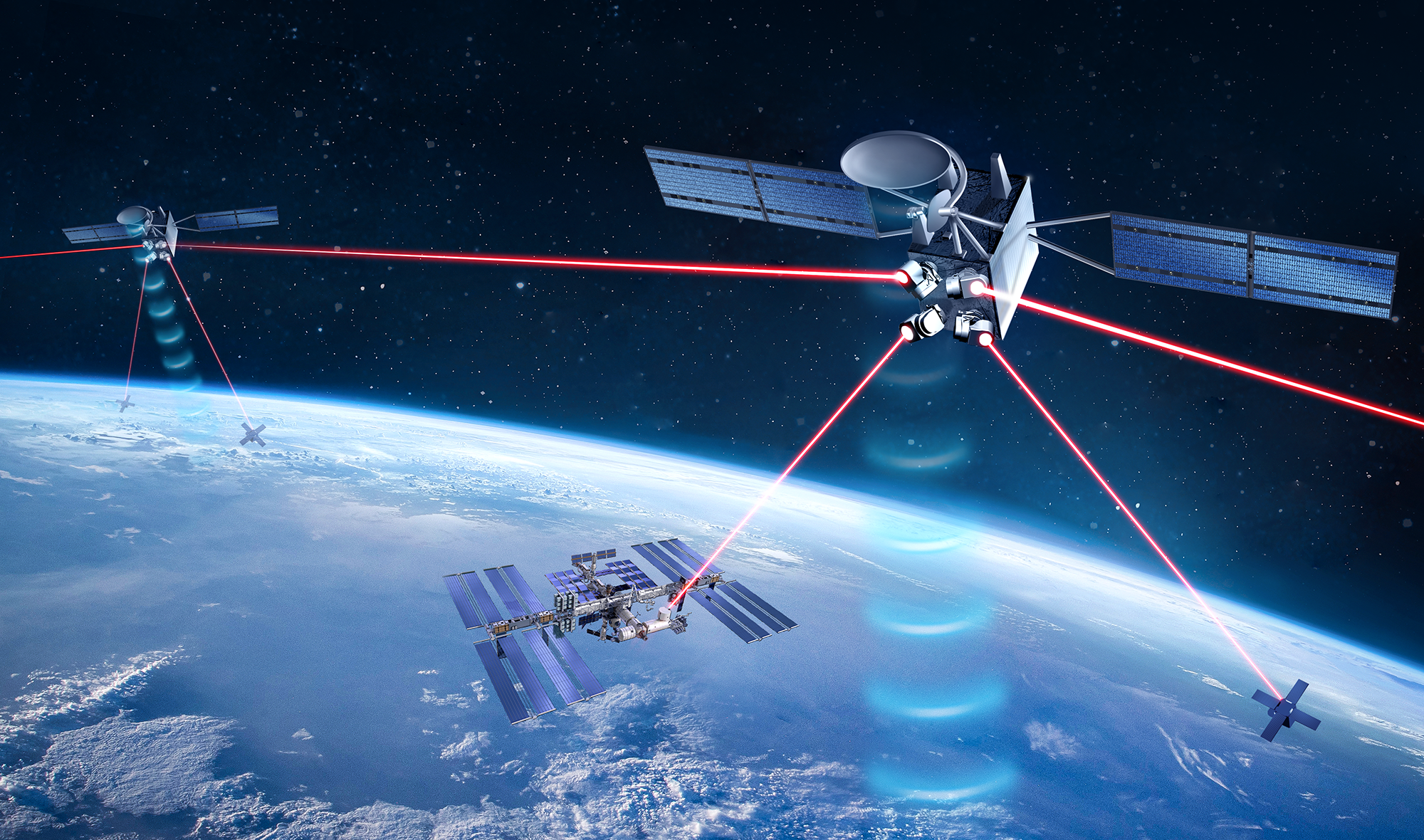Let’s start with a little math problem. With more than 7,500 satellites
currently in Low Earth Orbit (LEO), each generating between a few hundred gigabytes and multiple terabytes of data per day, how many bytes of data are generated each year?
OK, so we don’t really know the answer, and in reality, it’s changing all the time. But suffice it to say, LEO satellites, such as those that collect Earth
Observation (EO) data—generate tons and tons (and tons) of information for their end users.
But those end users have a problem. See, in order to send the data they
collect down to Earth, LEO satellites need to be positioned over their
corresponding ground stations. And since most of these satellites have a
round-the-globe rotation time of about 90 minutes, that means they’re only in connection with the ground for a fraction of their orbit time.
Two Wrong Options Don’t Make a Right
So, that leaves a satellite—which may be carrying time-sensitive and critical data—with two options: Either wait up to 90 minutes until it’s positioned above its ground station, or use an existing satellite relay system.
The trouble with these relay systems, though, is that most are government-built and government-run, so they’re not meant for today’s commercial-satellite-packed ecosystem. A system like NASA’s Tracking and Data Relay Satellite System, to choose just one government-run system, is great for relaying info from the ISS or from Hubble, but its main function is doing that—not handling those tons and tons (and tons) of data zooming around today.
In other words: We’ve got some of the sharpest minds in the world sending
billions of dollars’ worth of technology into space, propelling sophisticated
machinery out of our Earthly atmosphere so it can perform some of the most exciting, important research in the history of humanity.
And then ... that equipment is forced to use data relay technology that’s
basically the equivalent of “Get off the phone; I need to use the internet”-era connectivity.
“That’s really the way it is today in space,” says Dave Bettinger, CEO of
SpaceLink. “It’s really an inhibitor to the space economy that’s growing up
there.”
The EO market alone has a compound annual growth rate above 5% and is
projected to reach more than $6 billion by 2027, according to Market Reports World.
And with an influx of new LEO launches, we here on Earth can thank our lucky stars that these satellites are gathering data that help deepen our understanding of challenges—and also help us find valuable, sustainable solutions to those challenges.
And that’s why this mismatch in technology between futuristic satellites and outdated connectivity has serious implications.
It’s Time for ‘’Space Wi-Fi’’
Dave has deep roots in the space industry. He helped found and was CTO of
iDirect and led the space systems vision for OneWeb. And now, after almost
30 years in the business, he’s a first-time CEO at SpaceLink.
After studying the “dial-up in space” problem, Dave and his team hit upon a
solution: using optical, or laser communications, technology.
“It’s the same technology used for fiberoptics on the ground,” Dave says, “except you’re sending it through space as opposed to sending it through a fiber.”
Within the past few years, optical technology has improved by leaps and
bounds, and organizations as significant as the U.S. government are using it
to enable communications in space.
So, How Does It Work?
SpaceLink customers ask for their data to be sent from their satellites to
their ground stations quickly so they can access the data and respond in a
timely fashion.
Using optical links, SpaceLink transfers data up to SpaceLink’s MEO satellite
that is tracking the satellite.

.png?width=824&height=660&name=Orbits%20image%20block%201-2%20cropped%20(1).png)
.jpg?width=1930&height=1086&name=Satellite%20observing%20earth%20(1).jpg)
.png?width=1078&height=733&name=Hybrid%20space%20architecture%20(1).png)
